Read the first round of responses from April 17th here.
Monument Lab is committed to responding urgently to pressing questions around the social, political, and cultural implications of public space and art. Community engagement and collaboration across sectors have been foundational to our work. As we have built our exhibitions and projects, our team and many collaborators have often worked remotely and asynchronously. To augment local conversations and interventions across the globe, Monument Lab (like many other organizations) has utilized digital tools and social media. Although this approach is especially useful now, the current crisis presents qualitatively different obstacles for public and non-profit cultural sectors. Aside from issues related to economic hardship, the notion of what constitutes “public” has already shifted. The present moment has created new challenges. It has pushed many artists and practitioners to retreat out of public spaces to practice safe physical-distancing on behalf of the larger civic body, while faced with questions of how to adapt to the moment.
At Monument Lab, we have been trying to take care and cover, while discussing the rapid changes around us. In this time of uncertainty, we are collectively reflecting on and rethinking public engagement. To make this process of deliberation public, we reached out to several artists, curators, writers, and collaborators to reflect on shifting public spaces. We asked them two open-ended questions:
- What will public space look like after the pandemic?
- What kinds of monuments can we envision to commemorate, mourn, and grapple with the current pandemic, especially with the vast shift in our public spaces?
We are thankful to our respondents for their generosity, thoughtfulness, and wisdom. We will continue to add responses in the coming weeks. If you would like to share your answers, write to us at [email protected].
—Patricia Eunji Kim
IGGY CORTEZ
MELLON ASSISTANT PROFESSOR, CINEMA AND MEDIA ARTS, VANDERBILT UNIVERSITY
NASHVILLE, TN
What will public space look like after the pandemic?
As soon as classes went online, I’ve been speculating with my students about the relationship between films and television shows, the privately-owned streaming platforms that make them available to us, and what we envision to be “public space,” beginning with the premise that public space and moving image media are not discrete phenomena. So I’ll recalibrate the question slightly to address how the relationship between public space and the moving image arts might evolve. One take, as we have heard countless times by now, is that streaming shows helps us protect public space precisely by making our absence from it more bearable. Streaming platforms have been central to how we have collectively found some footing in this new reality. As film and television industries continue to be severely impacted by the pandemic, and new productions have been indefinitely halted, the prospect of new content seems increasingly unlikely. Nonetheless an endless inventory of shows and films still remain available to the homebound audience – its implicit accessibility, whether we avail of it or not, has played a large but mostly unspoken role in absorbing collective anxieties about a pandemic with no foreseeable end.
We already know that the pandemic threatens the survival of many theaters and will impact the kinds of films we get to see in some hypothetical future, as studios err towards productions that are likely to recoup losses at the expense of smaller fare. But perhaps on a less mournful note, I am also interested in how the pandemic has recast films we might already be familiar with in a different light. Previously inconsequential sequences now have an added valence, indiscriminately registering all that which we must now avoid: bumping against dancers in a crowded bar, impromptu socializing on the street, or the excitement of a room full of strangers, to quote a widely streamed television series.
What kinds of monuments can we envision to commemorate, mourn, and grapple with the current pandemic, especially with the vast shift in our public spaces?
Increasingly, we will be told that in order to honor the memory of the dead and the sacrifices of frontline workers we must repress conflict and comply to some mandated consensus on what adequate remembrance looks like. This process of repression, co-opting the memory of the dead or the labor of the vulnerable for some sanctioned narrative, constitutes the kind of monumental approach to memory that Rosalyn Deutsche has described as “driven by a passion for ignorance,” a fortification against remembrance and mourning in the name, perversely, of remembrance and mourning. As of today, what we might call collective demonstrations of remembrance respond to the still unfolding present. One example are the choreographed flash mobs of people clapping from windows or doorsteps that presume a screened mediation. As many have noted, it is important that such gestures of solidarity don’t absolve us from the responsibility of informed or engaged solidarity, veiling over the governmental disregard and financial gutting of those for whom we are purportedly clapping.
KATE KRACZON
CURATOR, THE DAVID WINTON BELL GALLERY, BROWN UNIVERSITY
PROVIDENCE, RI
What will public space look like after the pandemic?
"After the pandemic” can be interpreted many ways, but I want to respond as if that moment is truly post-infection, when a highly effective vaccine is widely available and fear has subsided. If that is the moment on the horizon, among many possible ones, I don’t believe people will be scared to hug, and kiss, and eat noisy, crowded meals together from shared plates, or dance in sweaty groups of strangers. Those behaviors are too central to what we are as animals, and their absence is why we are in such pain right now. How strange to have only a few familiar pheromones in the air of our daily lives!
Public space will change, of course, and previous respondents have aptly predicted heightened forms of surveillance that we will all encounter, despite their inequitable distribution (see Mashinka Firunts). What we must collectively resist is policing others, particularly as they seek the outside for exercise and mental health. However you define public space, my initial thoughts always go green, and the lack of green spaces in many neighborhoods across the country should be a priority as we reimagine a post-Covid-19 (not post-pandemic, because there will be others) world.
What kinds of monuments can we envision to commemorate, mourn, and grapple with the current pandemic, especially with the vast shift in our public spaces?
Walking my old North Philadelphia neighborhood over the last two months, after six in Providence, was jarring. Favorite trees and massive, flowering bushes are felled; signs on fences surrounding magnolia and willows warn of impending half-million-dollar plywood housing; and the sound of construction has started again this past week. What if we protected the urban wilds of Philadelphia and beyond, the wildflowers and “weeds,” sometimes entire blocks worth, that support birds and insects and other animals in our neighborhoods? What if--instead of the tax abated, cheaply made homes that have taken over much of the city--we invest in simple spaces of (as best as possible) indigenous plants (trees!) in the green deserts of the city? Why do we need architectural seating and landscape design? Why should our monuments only serve people? I imagine these as multi-species monuments, with nothing more than benches and accessible paths and ramps. Places for people to gather with green above and below, and as little cement as possible. I can’t take any more cement. But not for us (humans) exclusively.
Previous respondent Carmen Winant elaborated on how being outdoors is a newly meaningful part of many peoples lives, if one has access. With parking lots closed or full at state and local parks across the country (for those with cars), physical accessibility is even more elusive for all but the able-bodied and fit. As I was writing this, Rebecca Solnit published an opinion piece in the LA Times on how the pandemic has sharpened the divide in access to whatever we define as the natural world, and that “we should think of access to nature and open space as human rights and health issues and recognize how unequal that access has always been.” I hope there will be radical monument projects across the globe to healthcare workers, and food workers, and the delivery workers (USPS!) that kept us going, and I know that the gendered and racialized history of nature/culture complicates my fantasies about what green space means to different people, but sometimes I think the only way to face climate disaster (and its pandemics) is to stop centering people. And maybe monuments to anything but us is a start.
ERIC MOED AND PENELOPE PHYLACTOPOULOS
ARCHITECTS/DESIGNERS, CO-FOUNDERS, OFFICE OF OPEN PRACTICE STUDIO/AGENCY-OOPSA
NEW YORK, NY
What will public space look like after the pandemic?
After the pandemic, public space will be more important than ever before. Emerging from the current state of public paralysis we will need to rethink and re-learn how to negotiate, shape and share public space. It is urgent that we do not vanish from the public or relinquish opportunities for proximate interactions, provocations and collective experiences. Governments have now seen how easy it is to vacate public space - this is dangerous for democracy. Newly considered public spaces must provide options for both close-distance interaction and social distancing. In a recent protest in Tel Aviv, thousands of people filled a prominent square to protest governmental overreach - seamingly using the paving pattern to maintain a 6-foot distance from one another. (pictured)
The pandemic revealed ways in which we are connected to each other - locally and globally. Part of rethinking the public sphere should include a response to climate change. Ideally public space will be reconsidered and reconstituted not just as a part of the urban ecosystem, but also as a place that encourages an understanding towards the interconnectedness of Gaia - the idea that we are all part of a larger shared natural order, which we must all protect. Much like the pandemic affected the globe, climate change does too - though it may feel localized, it is very much a pan-societal issue. Shifting the way we occupy public space will ultimately shift our perception of the world.
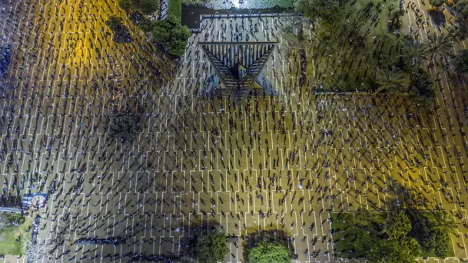
What kinds of monuments can we envision to commemorate, mourn, and grapple with the current pandemic, especially with the vast shift in our public spaces?
Post-pandemic monuments must respond to the full suite of systemic inequities that the coronavirus has exposed, by not only memorializing death and trauma but also by identifying the full spectrum of correlated outcomes. New pandemic monuments must expose the failures of governments who downplayed the threat of COVID19 for months – decisions that led to front line medical workers not having proper protective equipment, a massive uptick in domestic violence cases, and little-to no healthcare or income protections for low-income families and blue collar workers. The root of the word ‘monument’ is ‘monēre,’ a latin word meaning ‘a warning or a reminder.’ Memorializing tragically large numbers of pandemic deaths is necessary for posterity, mourning and healing. However, if post-pandemic monuments stop at memorialization, no matter their prominence, placement or form - physical or digital - they fail to warn future publics. This in turn fails to amplify the global injustices that the pandemic revealed. COVID19 monuments should seek justice for those affected by the virus and warn against non-repetition of the governmental blunders which exacerbated it’s toll. The root of the word pandemic is the greek word ‘pan’ meaning ‘all’ - a pandemic monument must speak to this as an all-inclusive tell-all, a monument in relation to the entire global spectrum of injustice and loss.
KARYN OLIVIER
ARTIST
PHILADELPHIA, PA
What will public space look like after the pandemic?
I am choosing to be optimistic. I want to believe that somehow more public spaces will be created to ensure access for all. And these spaces will be designed with mutability in mind—functioning effectively and deliberately in times of acute crisis, allowing for physical distance (as necessary) and acting as a salve when we need freedom from the confinement we all sometimes feel. We humans are adaptable creatures with a huge capacity to harness our curiosity, invent, adjust, retool. I am (more than ever) hyper-aware of the gift of my neighborhood park, a couple of wide sidewalks, the shelter of trees, which all help to steady me now, providing ballast in turbulent times. I want to believe we will remember this period of forced enclosure… this phase in our lives when public space was redefined. I hope we will remember the cheers from apartment windows directed into the almost empty streets—that seemingly desolate divide created a public space across which we reached out to each other, activating the emptiness, turning it into something alive with love. When a stranger crossed the sidewalk yesterday to maintain distance but while doing so said “Have a blessed day,” that, too, created a public space. My hope is for the show of tenderness to remain, despite our natural tendency toward amnesia, our preference for "moving on" after hardship. And I hope we’ll continue to expand the ways, means and forms that public space can manifest.
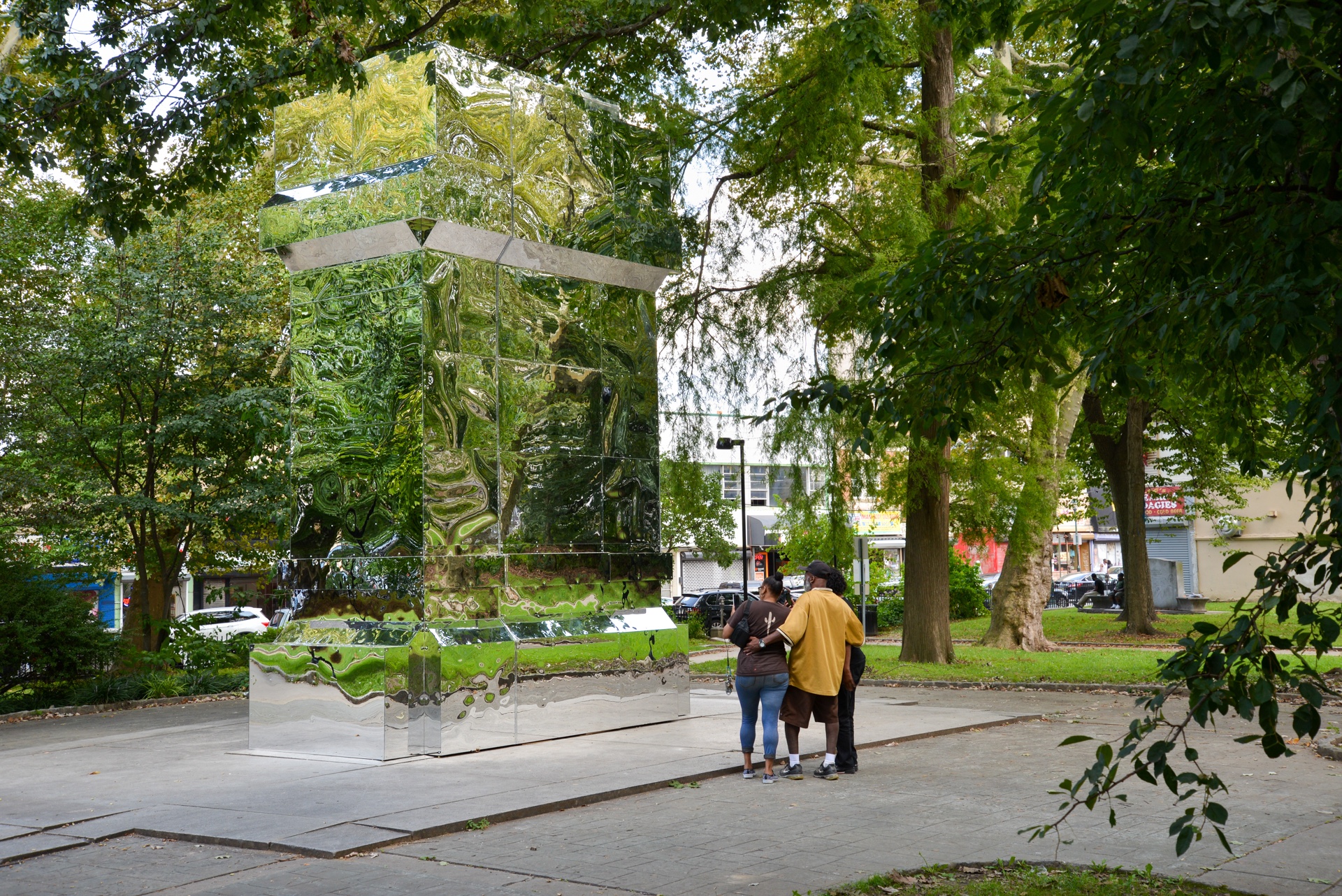
What kinds of monuments can we envision to commemorate, mourn, and grapple with the current pandemic, especially with the vast shift in our public spaces?
This is a tough question, as I am one of the many artists who’ve been invested in reimagining the new potential, function, responsibility and possibilities in monument-making. I keep thinking of one of the ways that Paul (Farber) defines monuments, “as statements of power and presence in public.” This can readily been seen in the material choice for traditional monuments (i.e. stone), which points to a monument’s declaration of longevity, permanence and authority. But despite their visible heft, we know where the might and force exist at these sites of commemoration or mourning—it is in the gathering. The fierce recognition and appreciation of each other—we imbue these monuments with power.
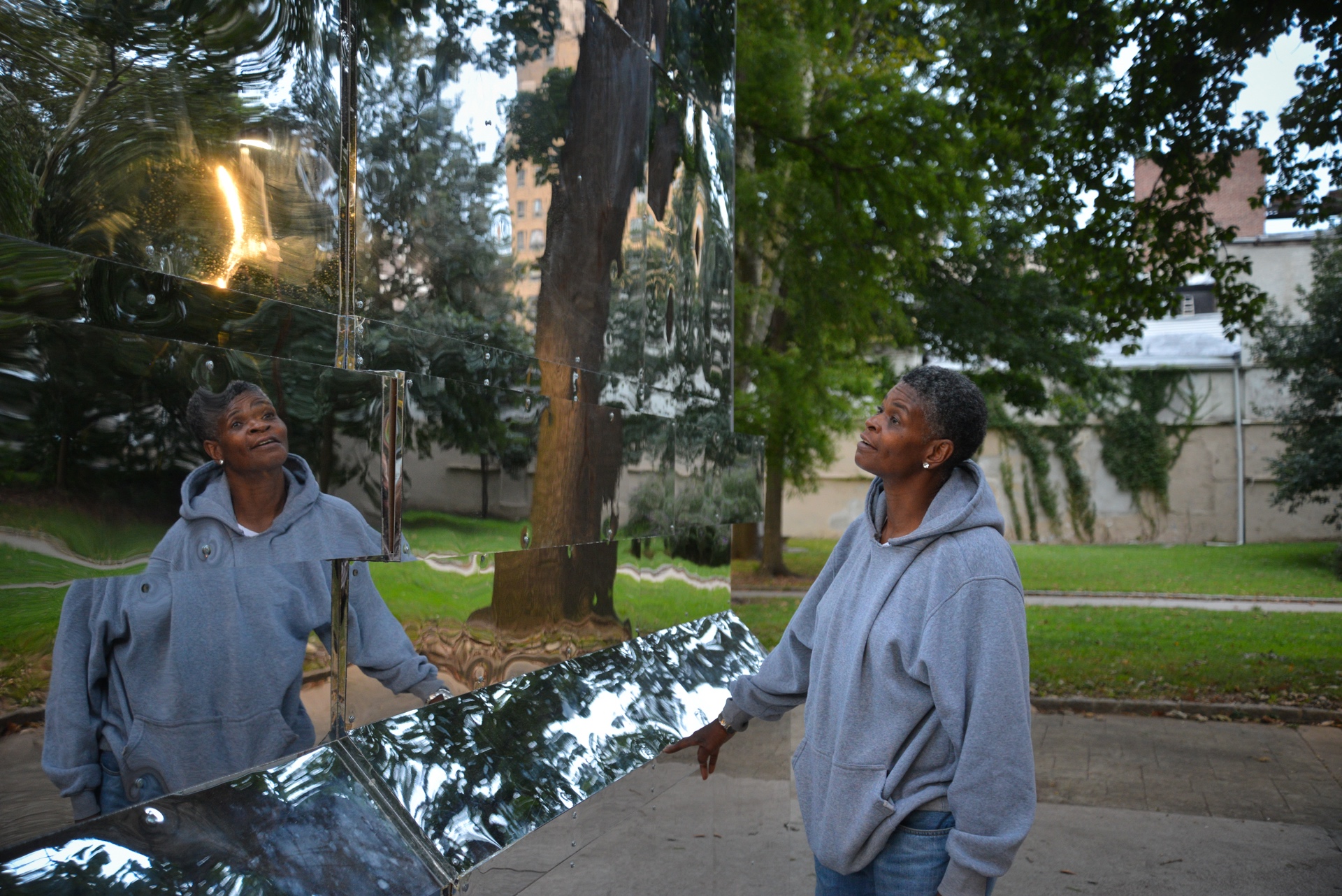
MICHELLA ANGELA ORTIZ
VISUAL ARTIST
PHILADELPHIA, PA
What will public space look like after the pandemic? What kinds of monuments can we envision to commemorate, mourn, and grapple with the current pandemic, especially with the vast shift in our public spaces?
As an artist, I am so used to being on the move and this pause gives me a time to reflect and be grateful. I am re-connecting with my home and the land on where it sits. I am looking inward by creating sacred areas for restoration, protection, mourning, and honor to my ancestors. I believe that the living breathing monument are the memories of how we lift one another at this moment.
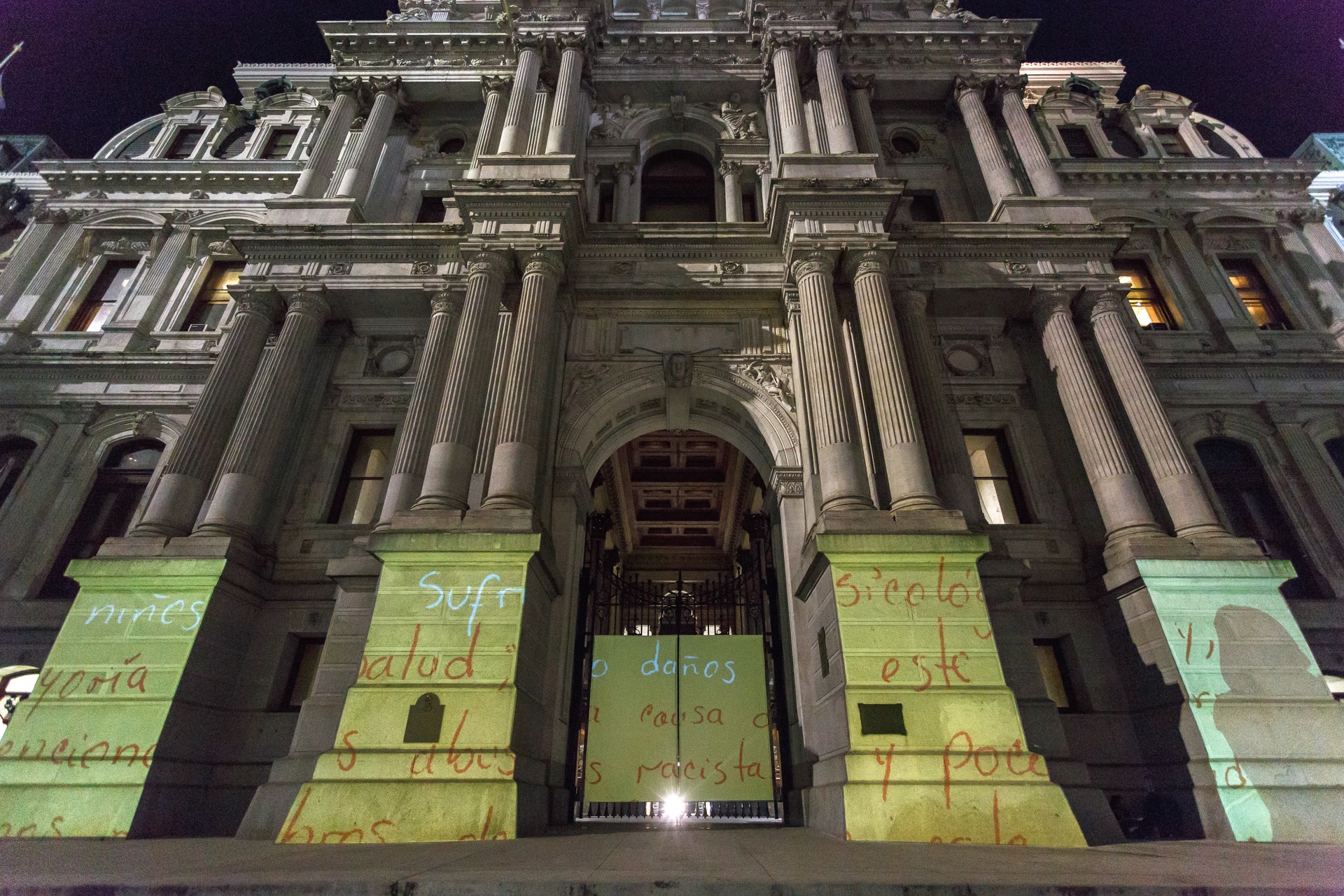
DEBORAH WILLIS
ARTIST AND PROFESSOR, TISCH SCHOOL OF THE ARTS, NEW YORK UNIVERSITY
NEW YORK CITY, NY
What will public space look like after the pandemic?
I imagine public spaces will be occupied differently in different regions of the country; however, in both large cities and in small towns we will see people gathering in smaller groups and respecting space of others... at least that's my hope.
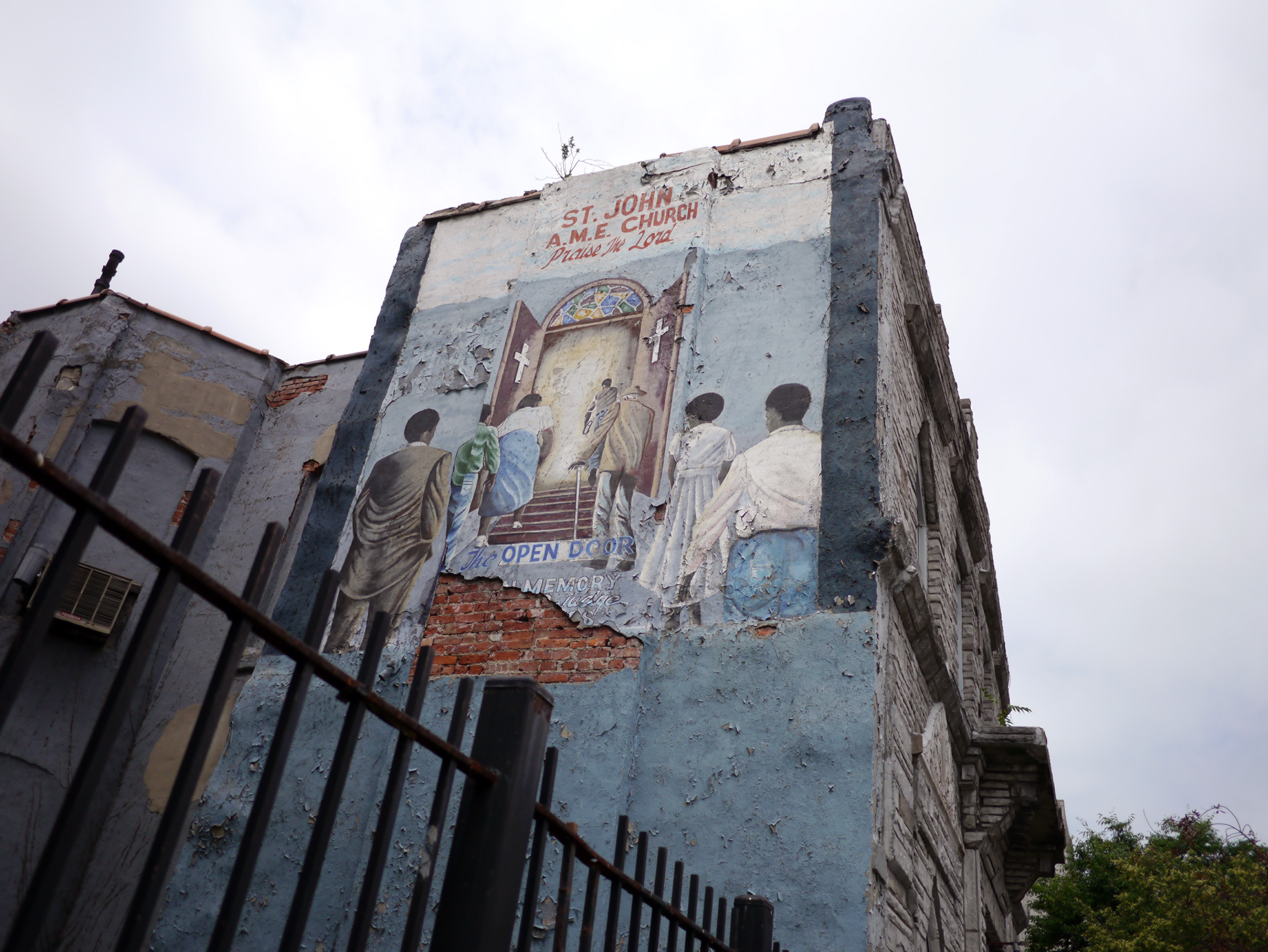
Deborah Willis, “The Upper Room: From the Sunday in Harlem Series”, Digital print, 2012.
What kinds of monuments can we envision to commemorate, mourn, and grapple with the current pandemic, especially with the vast shift in our public spaces?
As a photographer, it has been difficult to not photograph the havoc Covid-19 has wreaked, particularly and most on that which is most precious, our human body; however, as a writer and curator whose works explore how the female body—dressed and undressed—, is the actual evidence, the living narrative of its migrations and what is at stake therein, it has been apropos for me to look at images and text to explore pain, loss and joy in the midst of commensurate adversity. I would like to memorialize our experience in a public square with a running list of names etched on glass blocks of artists and writers we lost, not only as testament to the their indomitable human spirit but also a way of sounding the alerts for those we lost but others who risk their lives to ensure and protect life. The glass blocks will shine light on these names through sunlight and street lights and radiate in a maze that we will have to encounter in a public space.
